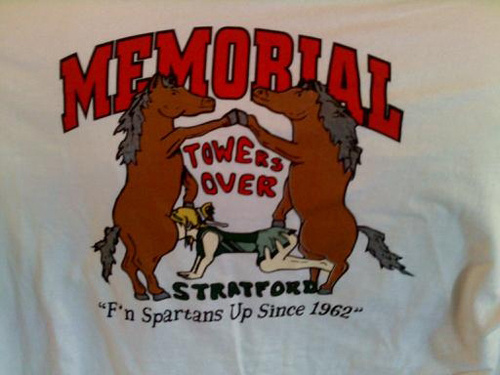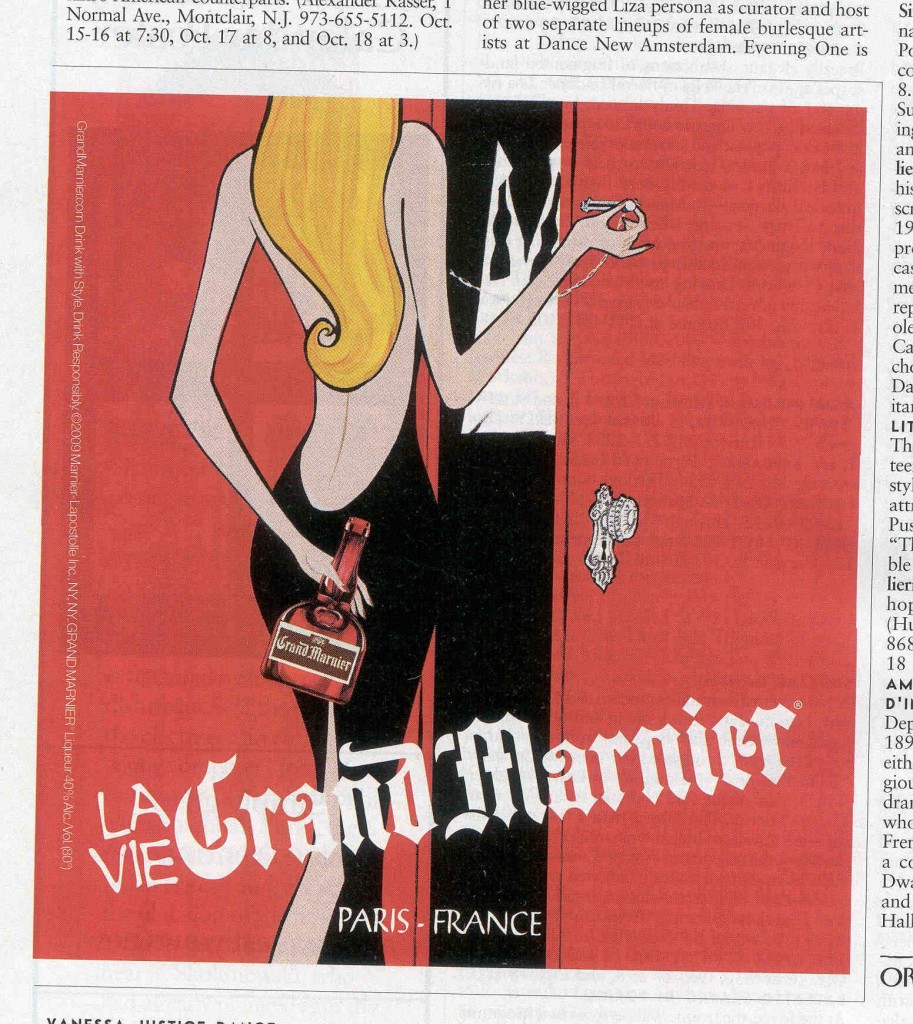Another doozy in the sexualization of young girls: “Girl’s Fishnet Tights.”
Borrowed from Lotería Chicana’sflickr set.
—————————
Lisa Wade is a professor of sociology at Occidental College. You can follow her on Twitter and Facebook.
Another doozy in the sexualization of young girls: “Girl’s Fishnet Tights.”
Borrowed from Lotería Chicana’sflickr set.
—————————
Lisa Wade is a professor of sociology at Occidental College. You can follow her on Twitter and Facebook.
These two Halloween costumes in a mall display, snapped by Deeky (here and here, via Shakesville), make a joke of women working in masculine occupations by suggesting that they’re, essentially, sex workers.
Captain Layover:

Free Rides:

See our other Halloween-related posts: two extra-special costumes (the Anna Rexia costume and the Sexy Scholar), Max Weber jack o’lantern (by yours truly), Obama mask sold as terrorist mask, a Sarah Palin effigy, handling sex offenders on trick-o’-treat day, and costume catalog analyses (here and here).
—————————
Lisa Wade is a professor of sociology at Occidental College. You can follow her on Twitter and Facebook.
Emily L. sent in a link to the t-shirt below. It was made by students at Houston’s Memorial High (go, Mustangs!) for the yearly football game against their rival, Stratford. It nicely reveals how sex and domination are conflated in American society. On the shirt, “beating” Stratford at football is conflated with “fucking” them. As the text says: “F’n Spartans Up Since 1962”:

As I’ve discussed elsewhere, it should be really troubling to us all that “fuck” has the double meaning that it does.
More conflations of sex and power here, here, here, here, here, here, here, here, here, and here.
Borrowed from Jezebel.
—————————
Lisa Wade is a professor of sociology at Occidental College. You can follow her on Twitter and Facebook.
Lisa Wade, PhD is an Associate Professor at Tulane University. She is the author of American Hookup, a book about college sexual culture; a textbook about gender; and a forthcoming introductory text: Terrible Magnificent Sociology. You can follow her on Twitter and Instagram.
Larry Harnisch, of The Daily Mirror, scanned these two ads for Grand Marnier from the latest New Yorker. Normally we don’t get too worked up over phallic imagery, but I thought these two might be good for discussion. Besides, it’s been a while since we linked to our awesome collections of ads featuring ejaculation imagery, subliminal sex, and not-so-subliminal sex (NSFW).
In the first, the woman greets a man at his door. She is wearing a dress with a very low cut back. She is holding the bottle behind her, angled provocatively. Don’t miss the shape of the bottle itself (and what exactly is that circle at the base of its neck?).

In the second ad, the woman sits deep in an armchair, her legs in the air. The bottle, being poured by a man, is tilted towards her, and spilling liquid into her glass.

So, Readers, what do you think? Is the bottle meant to be read as a penis subconsciously? Do you think it works that way, intended or not?
—————————
Lisa Wade is a professor of sociology at Occidental College. You can follow her on Twitter and Facebook.
Larry Harnisch of The Daily Mirror sent in this ad, which appeared in the Los Angeles Times on September 5, 1969:


Text from the top of the ad:
Does S&A really stand for Sex Appeal?
…and how! Our shoes are so sexy we only allow mature thinking adults to buy them…or young adults accompanied by a parent. When you wear S&A shoes, people will stare at your legs who were never never aware that you had any before.
It’s a great example of how quickly fashion standards can change. Today I’m pretty sure most, if not all, of these shoes would be considered old-fashioned and wouldn’t be marketed as sexy. Our ideas of what constitutes a “sexy” woman’s shoe today includes a higher, thinner heel, meaning they’re also in general less stable, harder to walk in, and worse for your feet than shoes with a chunky heel like these.
Hermes sent in a link to a feature in The Morning News titled “Men at Their Most Masculine,” in which men were asked about what made them feel masculine and photographed in situations that reflect their masculine identities. Some quotes from men included in the project:
“I feel masculine when I am home, I can take care of myself. I often feel emasculated when I leave my apartment though, with everyone asking me if I need help. I don’t need any help.”
“To be masculine is to dominate in one’s field of study.”
“I want to show that, despite stereotypes, gay men can be masculine too.”
“I feel most masculine when I am lying in bed naked.”
“I am strong emotionally, have always stood up for myself, and fear nothing. I happen to be physically strong but that isn’t where I derive my masculinity.”
“I am masculine because I abandon women after taking their love. Because when you study Freud, you don’t let him study you. Because I study philosophy, not literature.”
Visit at photographer Chad States’s website. He apparently found all of the featured men via craigslist.
The photos and quotes illustrate some interesting contradictions in definitions of masculinity. Several of the men define masculinity in fairly traditional terms, using words like “dominate” or expressing masculinity as the ability to use women and then leave them. There is also an emphasis on being independent and not needing help from anyone else.
In other cases, the men redefine masculinity to at least some extent, such as the gay man who reclaims masculinity for gays, the guy who focuses on being emotionally strong, and the man shown posed in a way we’re more used to seeing with women.
It’s an interesting look at some of the ways men define masculinity at a time when we expect men to be more emotionally available and involved in family life (as opposed to the 1950s emotionally closed-off model) but provide mixed signals by also still judging men harshly if they seem too emotional or don’t meet ideals of what “real” men should be like.
Gwen Sharp is an associate professor of sociology at Nevada State College. You can follow her on Twitter at @gwensharpnv.
We’ve collected many images of the gendering and sexualization of food, where foods are turned into sexy female bodies or are shown alongside sexy women. Miriam sent us a link to Brick House Tavern & Tap, which markets itself as a Hooters-lite for-the-guys restaurant. The menu includes some sexualized elements, and is based on a clear gendering of items. Clearly it’s objectifying women (check out the website), but what interests me is the message we get about masculinity.
There are salads for men and women; the male version includes two types of meat and boiled egg:

Men are supposed to control things; foods are described as dominant or submissive. I presume the “man-cave” dish would fall into the dominant category:

Men’s foods are unhealthy. Steamed, rather than fried, options? Those are for the ladies:

Real manliness is associated with guns:

UPDATE: Reader Lisa says,
I thought the “gun show” reference was to biceps – e.g. men have muscles and women don’t. (e.g. Do you have your tickets to the gun show? har har har)
That makes total sense. I’ve had the good luck to never have heard that particular joke until now.
There’s also a class element:

And desserts are “the happy ending,” with “double d” cupcakes and “sweet, innocent” (girl)-next-door apple crumble:

It’s a common theme (see Lisa’s post on frozen dinners): real men need big meals with lots of meat. They don’t worry about health–they want you to deep-fry everything, dammit! Trying to eat a healthy, low-fat diet is for women. And foods are depicted as parts of women’s bodies (“double d”) or associated with sex (“the happy ending”).
See also Campbell’s ad saying beef soup is for men only.
Adeste S. sent in this performance by two women about the difficulties and frustrations of being transgendered:
Performed at Brave New Voices.
NEW! (Mar. ’10): Ryan sent in this video of Sass Rogando Sasot speaking to the United Nations about transgender rights. From an article at Coilhouse:
Her speech, titled “Reclaiming the Lucidity of Our Hearts”, addresses the need for vastly improved acceptance, support and protection of transgender citizens worldwide.
Her entire presentation is very moving, but about 8 minutes into this clip, something shifts in Sasot’s voice and delivery. What began as an engaging speech swiftly transforms into something far more urgent, immediate, and beautiful.